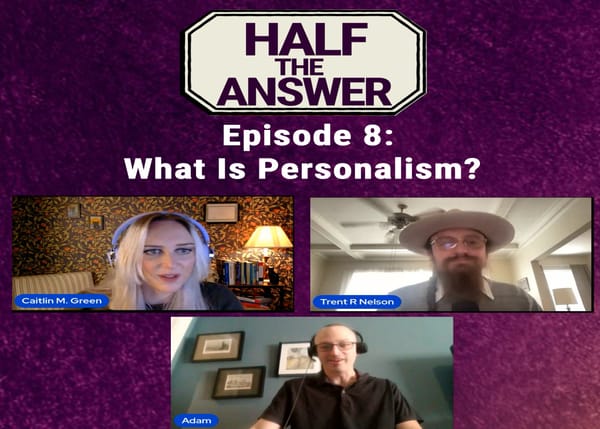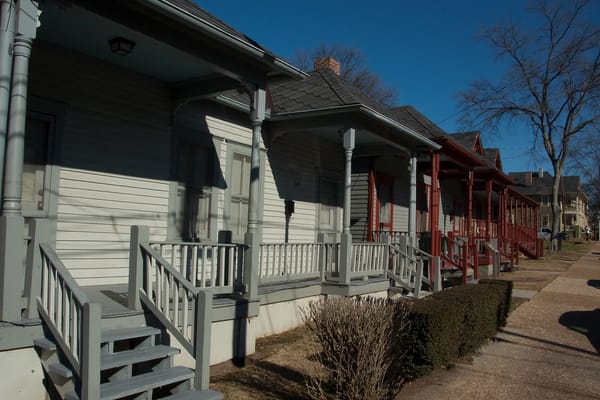Democracy vs Liberty in Annelien De Dijn’s Freedom: An Unruly History

It is nearly always productive to explore the tension between democracy and liberty, as this is not a tension that any society resolves on a lasting basis. Resolutions are by nature temporary and tenuous—immediately reviled, vigorously renegotiated, and, sometimes, productively reformed. That is why Annelien De Dijn’s Freedom: An Unruly History (hereafter Freedom) is a welcome contribution to this ongoing exploration. De Dijn identifies important shifts in the dominant conceptions of freedom over time, how the pendulum has swung between a fundamentally democratic conception of freedom and a freedom more associated with personal autonomy and non-interference. These conceptions of freedom entail very distinct visions of government: on the one hand, a free society where the government is responsive to citizen majorities; on the other, a free society forming a limited government to keep individuals secure in their lives and property. De Dijn is clear about where she believes the pendulum has been stuck and why it needs to swing back toward identifying freedom primarily with democratic decision-making. Unfortunately, in an effort to portray these concepts as ruthless antagonists, Freedom misses an opportunity to engage with the complex interdependence of liberty and democracy.
Liberty: ancient, modern and in between
In this telling, the history of freedom begins in ancient Greece, as limited, direct democracy spreads across a growing number of city-states, most famously in Athens, around 500 BCE. As part of this transformation, Greeks repurposed the vocabulary of freedom and slavery to refer not simply to an individual’s legal status but to contrast a state in which citizens governed themselves with a state in which individuals were governed, without their consent, by a dictator. Conflict with Persia would serve to solidify this kind of freedom as part of Greek political identity. Benjamin Constant called this Athenian version of freedom the “liberty of the ancients” in contrast with the “liberty of the moderns” associated with personal autonomy.
The unruly history moves on from Athens, its pendulum swinging between a liberty of personal autonomy and a democratic freedom, passing through medieval, Renaissance and Reformation concepts of freedom, to natural rights doctrines, the Atlantic revolutions, the Gilded Age, laissez-faire, liberalism, socialism, and postwar anti-communism. Freedom features an impressive range of philosophers, politicians and advocates and provides more than enough historical detail to understand the motivations and objectives behind their arguments. The arguments seem to repeat themselves with striking regularity, and De Dijn identifies cycles of argument, action, and reaction that are surprisingly consistent.
The pattern is as follows: Through the occasional and fortuitous confluence of events, democracies form. Some combination of political agitation and violent upheaval expands the franchise. More broadly shared power sparks a backlash, led by those whose voting power or privilege has been diluted, who then work to curtail suffrage and bolster counter-majoritarian institutions. De Dijn describes, for example, the well known backlash against Black male suffrage after Reconstruction, which produced substantial barriers to voting, including poll taxes and literacy tests. Less well known, perhaps, Freedom also describes how these same barriers would, not much later, be wielded to limit voting by poor whites and immigrants as they clamored for better industrial working conditions. While the extension of suffrage to black men also “inspired new claims for inclusion, notably by women”, one must take a much longer view to see meaningful progress on women’s suffrage or Black civil and voting rights. Throughout these transitions interested factions and sympathetic theorists made two principal attacks on democratic governance: (1) creating obstacles to universal suffrage and (2) urging limits on majoritarian decision making, either by circumscribing legislative power or raising the level of consensus required to enact law (via supermajorities, bicameralism, presidential vetoes, etc.). It is essential to distinguish between these two arguments—the former, wholly illegitimate, the latter, generally fair game.
There is no morally legitimate, persuasive case for anything other than universal adult suffrage. Freedom describes how the language of liberty was routinely deployed to suppress and delay suffrage. Wealthy aristocrats and other propertied men feared that democratic decision making carried out by a larger cross section of society could threaten their economic and social privileges. To preserve their positions, they had spent generations erecting barriers to economic and civic opportunities, which new voters rightly sought to deconstruct. This is an important and troubling legacy for modern liberals to recognize. In contrast, regarding the appropriate purview of legislative authority and how popular support should be channeled to enact legislation, there should be ample scope for disagreement, debate and compromise.
Liberty and democracy: in opposition or in balance?
In a book covering such a great stretch of time, one should expect some simplification. In large part Freedom appears to do so judiciously and without much loss of nuance. However, the effort to portray democracy and liberty as representing fully separable intellectual combatants leaves at least one casualty that is hard to justify. John Locke is portrayed as embracing the ancient, democratic conception of freedom rather than a freedom centered on non-interference. I expect I would not be the only reader to find this a rather incomplete characterization of Locke’s views. Locke famously argued that popular sovereignty followed from natural rights, and combined majoritarian decision making with clear limits on legislative authority. His theory of property and its influence on advocates for limited government is notorious. So instead of repeated salvos across an impregnable divide we have Locke, among a long line of political theorists, attempting to reconcile popular sovereignty and individual liberty.
Freedom presents the concept of limited government as a rhetorical rather than substantive innovation, whose sole function has been to stifle nascent democratic movements and safeguard economic privilege. In short, De Dijn concludes that “concerns about the illiberal nature of democracy were sparked by fears about its redistributive effects” rather than genuine concerns about personal autonomy. Freedom argues convincingly that limited government rhetoric has been repeatedly—and often to great effect—used in this way. But Freedom often leaves by the wayside any legitimate rationale for finite legislative power, enumerated rights, or independent courts. This omission is convenient for De Dijn’s argument but might leave the reader wondering whether there are any justifiable boundaries on legislative authority and majority decision-making. Can majorities dictate religious beliefs, expropriate property without recourse, or incarcerate individuals without trial? We might take these boundaries for granted in secular, liberal democracies, but a model of governance based entirely on popular sovereignty and simple majority rule must reckon with these questions much more directly than Freedom does. One could argue that enumerated rights are mere “parchment barriers” or that majoritarian democracies are in fact highly respectful of individual rights, but Freedom does not make these arguments nor elaborate on any related evidence.
Should we think of the freedoms of the ancients and moderns as opposites, or something else? I think these concepts are closer than De Dijn argues, even in their ancient origins. While the popular sovereignty of Athens was a valuable institution and point of pride for Athenian citizens, it was not solely an end in itself. The free Athenian man was not merely an enthusiast for legislative procedure, he was engaged in a process to preserve his personal sovereignty, his right to make private decisions without requiring the permission of a master (or, by and large, a magistrate). Scholars of democratic Athens have documented, for example, respect for free speech as well as the importance of the rule of law in promoting private autonomy. Moreover, even when democracy and liberty represent clear and distinct concepts, it is plausible that a middle ground between them can secure both more dependably. Personal liberty cannot be reliably protected without the capacity to elect or reject public officials that protect or threaten liberty, respectively. Democratic elections cannot be credible and fair without freedoms of speech, press, and assembly.
The future of freedom
Freedom concludes with what seems an unfair and off the mark criticism of Fareed Zakaria’s The Future of Freedom. The covers of both books feature versions of Eugene Delacroix’s iconic Liberty Leading the People, a fitting example of competing efforts to claim the mantle of freedom. This is more or less where the similarity ends. According to De Dijn, Zakaria is among a class of intellectuals that “think of democracy primarily as a threat to liberty” and favor “severe constraints on the expression of the popular will.” I think it more accurate to say that Zakaria, among others, sees democracy as a necessary but not sufficient condition for liberty, rather than a “threat” to it.
Freedom suggests that even today this type of argument impedes efforts to establish “greater popular control over government, including the use of state power to enhance the collective wellbeing.” De Dijn is correct that Zakaria was concerned about popular majorities and laws that did not respect liberal institutions or liberal aims. The Future of Freedom was focused on seemingly or superficially democratic processes that could be used to suppress political speech, outlaw critical media, or disband opposition political parties, thereby undermining democracy itself. Highlighting these trends in Russia, Belarus and Venezuela, Zakaria feared that this template of “elected autocrats” could be copied elsewhere. The template has proved all too successful.
Since 2003, when The Future of Freedom was published, illiberal democracies have become more prevalent and more entrenched. Freedom House has called it “fourteen years of democratic decline.” Some researchers have described a “global democratic recession” featuring a “gradual erosion of freedom of expression and association” in affected countries. Kim Lane Scheppele has documented an unsettling pattern in which legitimately elected leaders “use their electoral mandates to dismantle by law the constitutional systems they inherited” attempting to “consolidate power and to remain in office indefinitely.” Scheppele demonstrates how the template was applied in Hungary and Egypt, for example, by imposing new retirement ages for judges, allowing dominant parties to pack the courts with allies, weakening judicial constraints on executive action.
The risks to minority ethnic and religious groups are not abstract concerns but concrete threats safety and freedom of worship. From anti-Muslim violence in India to attacks on Coptic Christians in Egypt, legal constraints on freedom of worship and official indifference to sectarian violence are a fact of life in countries with elections but a dearth of religious liberty. In short, The Future of Freedom was, well, correct about the future of freedom—maintaining its rhetorical presence overhead but experiencing substantial losses on the ground. Freedom is silent on these developments, whether they are cause for concern or how they might be avoided.
Freedom is nevertheless a timely read amidst urgent public debates about providing reliable and safe access to the ballot during the COVID-19 pandemic and growing concerns about the Supreme Court’s invalidation of key aspects of the Voting Rights Act. The cycles of democratic expansion and backlash described in Freedom, and the catalog of arguments marshalled in favor of each, are illuminating. The book should spark a productive discussion about the uses and abuses of the rhetoric of freedom. It also serves as an important reminder that the work to resolve the tension between liberty and democracy is ever incomplete. Non-interference liberals and majoritarian democrats should find much to inform their compulsory debates over which aspects of society the public may regulate and how much consensus should be required for public action.
Featured Image is Liberty bringing back Justice and Liberty to peoples, by Jean-Jacques Taillasson




